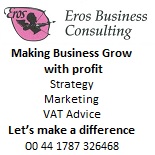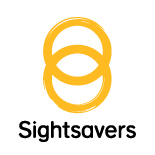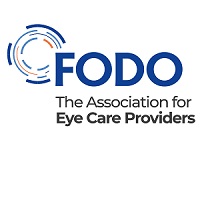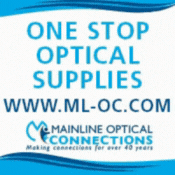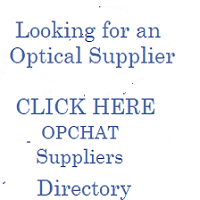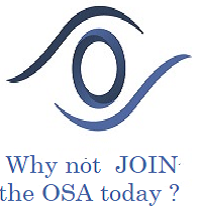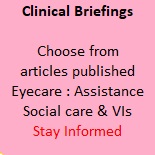Seven Ways to Make Low Vision Services Pay
By Daniel Williams, Founder of Visualise Training and Consultancy – A Man on a Mission with Low Vision
Business always has a bottom line. You may enthusiastically get your start-up launched with a view to helping a few people, but if you’re not making enough money to pay your rent, staff, suppliers and yourself then you soon find your ‘bottom line’ kicked to the curb.
The ‘bottom line’ is the phrase I hear over and again, when I’m travelling around the country delivering our CET Seeing Beyond the Eyes road show, which is for dispensing opticians and optometrists who are not investing in low vision services.
Most of you genuinely want – just as the politicians always say – ‘to do the right thing’ for low vision patients and deliver the vital services they need. You struggle however, like the Chancellor losing sleepless nights over his budget, to balance doing the right thing…with doing the right thing financially. Put bluntly, you consider low vision patients low profit and low priority.
To put it in sharp focus, so to speak, in this article I’m going to point to some different numbers. Generally speaking, I’m one of those guys who glazes over when reading articles like these. You know the kind of thing I mean: ‘Six Reasons to Commit to Fit!’, ‘Five Things You Never Knew About Cheese!’
Hence, why I’m about to give you a list, ‘Seven Ways to Make Low Vision Services Pay.’
Here goes….
1) Know your stuff
When you refer a patient to a sight loss service or locate other additional assistance for them beyond what might seem to be your remit, it may appear to be a lose-lose scenario, but it’s actually a win-win.
By showing how fully aware you are of the needs of someone with low vision, and how informed you are of the other services available, you don’t loosen your grip on your low-vision patient…but gain a firmer one.
Having an empathetic, low-vision-informed optician can be as rare as finding the goose that lays the golden egg. And yet, that golden egg – and we’re not talking here about the chocolate, foil-wrapped variety – will attract a raft of new clients as news of your gilt-edged customer service spreads to friends and family, who may include low-vision and fully-sighted people. And yes, contrary to popular belief, the low and fully sighted do interact and socialise together from time to time.
So, forget social media initiatives, don’t waste money on ineffective advertising, simply let low vision patients sing your praises and then you can listen to your cash tills singing back at you in return.
2) Plug the gap
Here’s an interesting fact: people with low vision are more likely to buy a magnifier from a pound shop or a garden centre than from an optician. A simple object, a huge support. But opticians are generally so poorly stocked with magnifiers that people with low vision are more likely to go rooting around plant pots and manure, or bleach and economy toilet rolls, than consult with a low vision expert when sourcing this vital piece of equipment. So, go plug that market gap. Stock a range of magnifiers, offer a professional consultation service, and watch your low-vision client list and your sales bloom, without a bag of compost in sight.
You know lighting can help enhance vision, you may talk to your patient about the importance of this. Don’t miss an opportunity, why not sell and demonstrate lighting to patients and make their lives brighter.
3) Embrace the future
As an entrepreneur myself, I know that you make money by embracing, not ignoring, technological advance. If in doubt, ask Bill Gates and Mark Zuckerberg: you could try getting in touch by Facebook if they won’t accept your calls. The same applies to assistive technology for low vision patients. Get on top of the incredible advances in this field, from video magnifiers to Orcam to Oxsight to large print phones, and you could also be on your way to your first billion.
Many opticians and optometrists are wary of investing large sums in assistive technology, and imagine that it’s prohibitively expensive but, as with everything, you don’t need to buy the whole kit and caboodle.
Talk to colleagues and existing low vision patients to get a sense of what tech is most useful. Good business is about doing your homework, assessing, reassessing and then doing your homework again. Sounds like a lot of homework, but in the long run it’s worth it. There are many low vision suppliers happy to pay referral fees, if you gain the patients interest in their products.
4) Up-sell with holistic add-ons
The more research that’s done, the more we understand the multiple causes of sight loss. We now know, for example, that the regular consumption of certain vitamins can have a significant effect on reducing or delaying sight loss. So why aren’t you selling these alongside your other products? It’s a golden mantra of business that it’s the add-ons that make the difference between an end-of-year profit or loss. It’s a simple equation: stock vitamins A and B, and C the positive impact on your balance sheet. Hopefully, you’ll see what I mean.
5) Five: Speculate with high-spec specs
If you can get your tongue around that, you’re a winner. But it makes a valid point. Patients with low vision need high-quality sunglasses, but too often end up going back to the pound shop because they don’t have access to the protective models and expert advice they need. Get yourself up-to-speed on the tints – and the ranges – of sunglasses which low vision customers need for different lighting conditions, and you’re putting your business in the frame for success. Remember not all low vision patients want to wear stereotypical black glasses with dark lenses – many like to rock designer frames with cool coloured tints.
6) Profit from going the extra mile
Another good tip from the golden book of business savvy: if you’re looking to build your practice, provide a service that nobody else is offering. Home visits, for example, are welcomed by many low vision patients, particularly those with more serious conditions, and of course the elderly. Also, think about how low-vision friendly your premises are set out. A few very simple adjustments in access and navigation could make all the difference and attract a whole new cohort of customers. Think about high colour contrast in your practice design. It could be a simple as having a wind chime outside your practice so patients know they have arrived.
7) Market strategically for success
You may think marketing is a waste of time and money. Target the right sources, for example GPs, health centres and low-vision support groups, and you’re not wasting your time. This sort of marketing is essentially free and puts you directly in contact with the client base you need to be talking to.
So, there we are: seven pointers towards a better, brighter low-vision business. Protecting and enhancing the sight of low-vision patients should be firming up your bottom line, not leaving it saggy.
Attending local groups and engaging with patients who have low vision can build emotional connections and loyal customers.
If you’d like to know more about how your business can make a real difference to the lives of people with low vision and its bottom line, come along to one of our Seeing Beyond the Eyes workshops by booking here https://www.eventbrite.co.uk/o/visualise-training-and-consultancy-and-orbita-black-7994577028 or contact me on 07472305268 or at daniel@visualisetrainingandconsultancy.co.uk
To complement the course, we’ve produced an innovative resource pack which
includes suppliers of assistive products and technology. Download your free copy at http://www.visualisetrainingandconsultancy.com/resource-pack-health-pros/
Dan Williams CEO Visualise-Training & Consultancy
Take a look at other clinical briefing papers published by PHN










